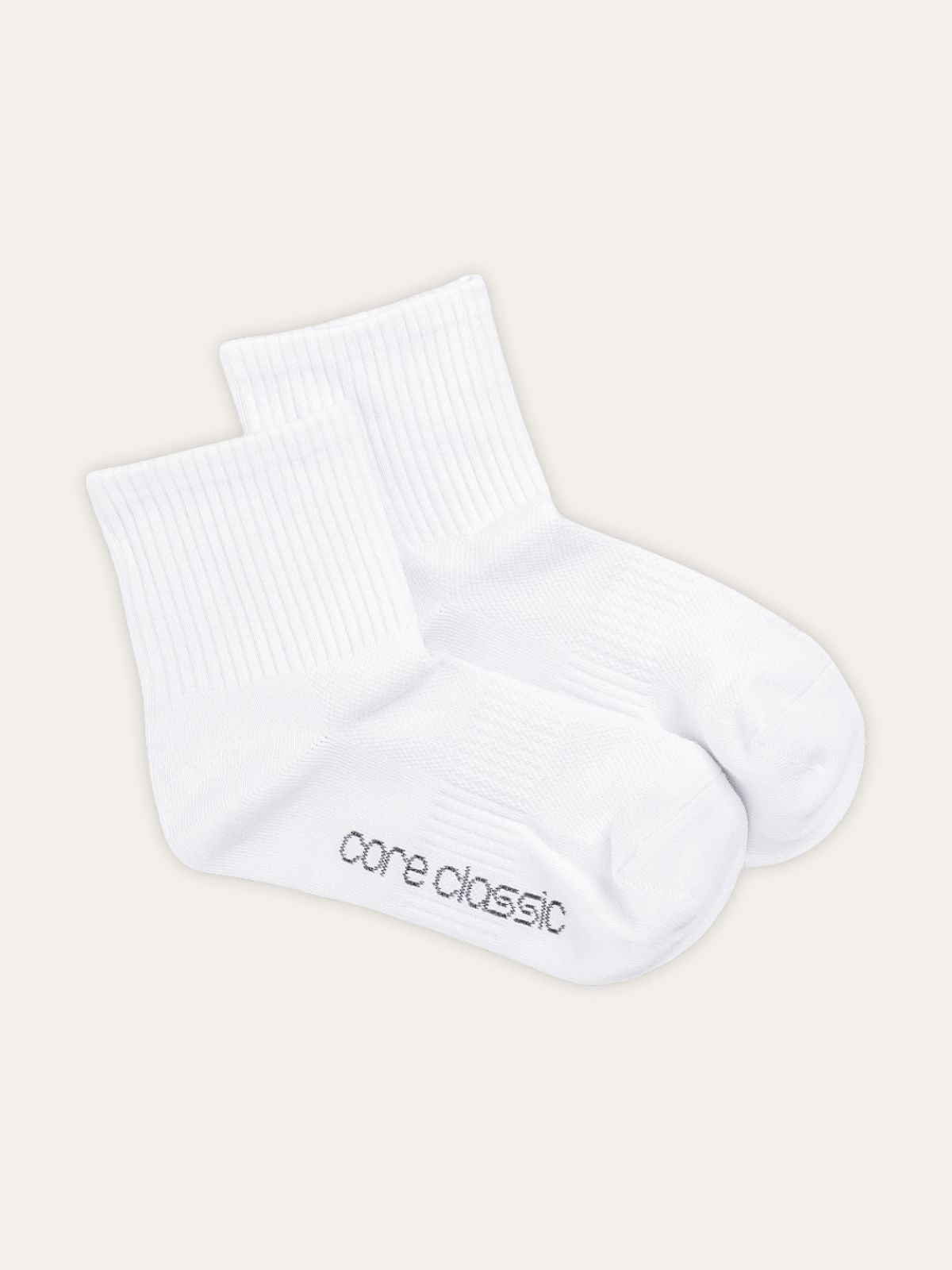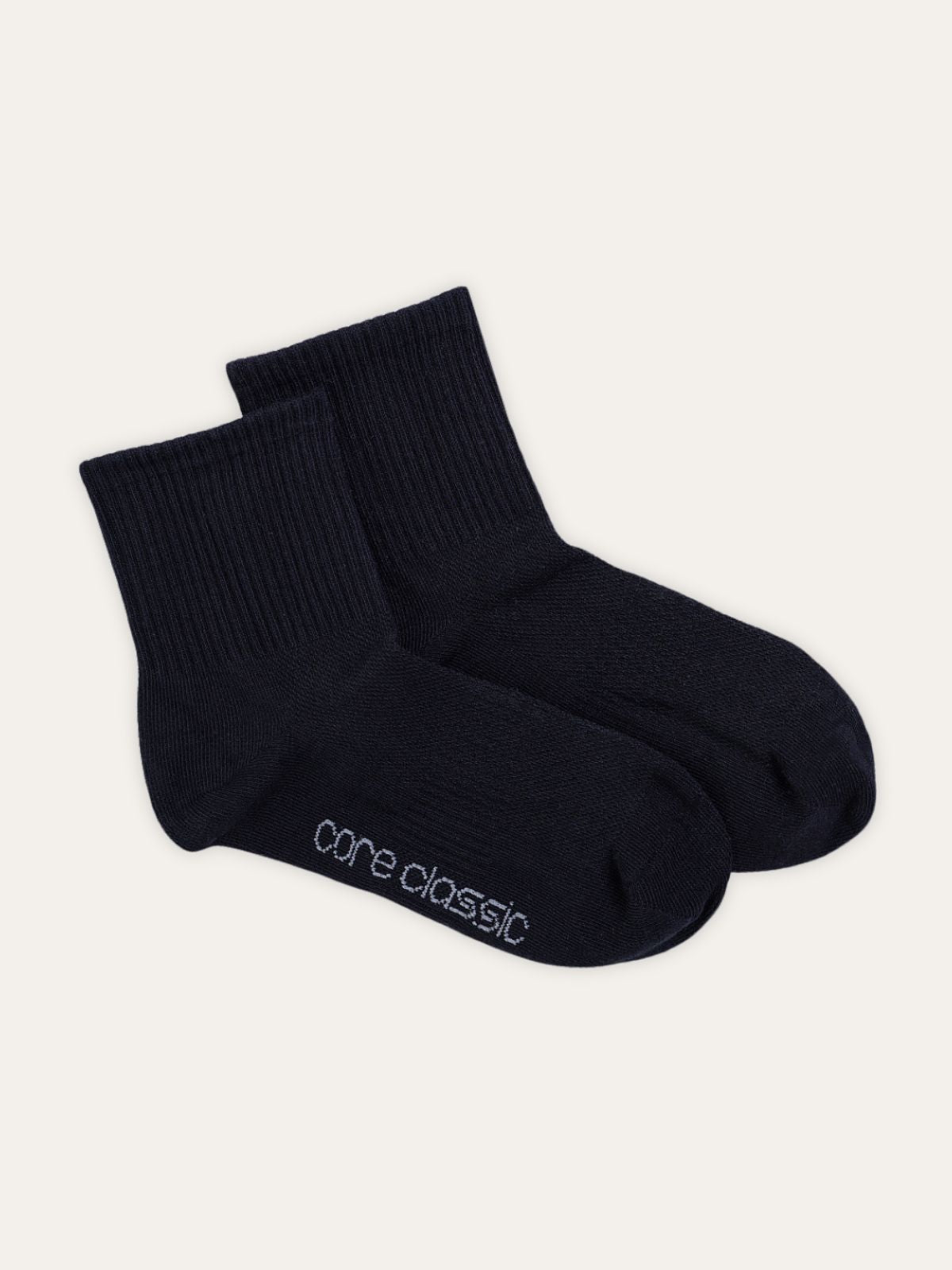Have you ever wondered why a plain white t-shirt feels different from a thick hoodie, even if they're both 100% cotton? The answer often comes down to one simple metric: GSM, or Grams per Square Metre. While often overlooked, understanding GSM is key to making smarter choices about your clothes, whether you're shopping for a lightweight summer dress or a durable pair of trousers. This guide will break down what GSM means, why it’s so important, and how you can use this knowledge to build a better, more functional wardrobe.
What Does GSM Stand For?
GSM is a metric you'll frequently see in fabric and clothing descriptions, but it's a term that many people don't fully understand. It stands for Grams per Square Metre, and it's a standard measurement used to determine the weight of a fabric.
Think of it this way, if you were to cut a one-square-meter piece of fabric, its weight in grams would be its GSM. A higher GSM means the fabric is heavier and denser, while a lower GSM indicates a lighter and thinner fabric. This simple number provides a universal way to compare fabrics and understand their properties, regardless of what they're made of. It’s a key piece of information for anyone looking to understand fabric beyond just its look and feel.

What Determines Fabric Density & Fabric Weight?
The GSM of a fabric isn't a random number; it's the result of several factors that come together during the manufacturing process. Understanding these elements can give you a clearer picture of why certain fabrics are heavy or light.
Fiber Type
The type of fiber used is a major factor. Some fibers are naturally heavier than others. For instance, cotton fibers are generally heavier than synthetic fibers like nylon or certain types of polyester, which can be engineered to be very lightweight. Even within the same fiber, like cotton, different grades can affect the final weight.
Yarn Count & Twist
This refers to the thickness and fineness of the yarn itself. A thicker yarn (a lower yarn count) will naturally create a heavier fabric, while a finer, higher-count yarn will result in a lighter, more delicate fabric. The twist of the yarn, which is how tightly the fibers are spun together, also affects its density and, therefore, its weight.
Weave & Knitting
The structure of the fabric plays a significant role. A tight, dense weave, like that used for denim or canvas, will have a higher GSM because the yarns are packed closely together. In contrast, a loose knit, such as for a thin jersey t-shirt, will have a lower GSM as there is more space between the threads. The type of weave directly impacts how much yarn is needed per square meter and thus, the final weight.
How GSM Affects Fabric
Feel and Drape
A fabric with a low GSM (under 150 GSM) will feel lightweight and often have a soft, flowing drape, making it ideal for creating garments that hang loosely on the body. In contrast, a high-GSM fabric (over 250 GSM) will feel heavier, more substantial, and will hold its shape better, providing a structured feel.
Opacity
GSM is a good measure of how opaque or see-through a fabric is. Lighter fabrics with a low GSM tend to be more translucent or even sheer, while higher-GSM fabrics are denser and more opaque. For a white t-shirt, for example, a higher GSM is often preferred to ensure it isn't see-through.
Durability and Wear
Generally, a higher GSM means a more durable and resilient fabric. The increased density and weight often come from a tighter weave or thicker yarns, making the material less prone to tearing, stretching, or wearing thin over time. This is why heavy-duty fabrics like denim and canvas have very high GSM values.
Why Does Fabric Weight Matter?
GSM isn't just a technical detail; it's a practical factor that has a huge impact on a garment's functionality and your comfort. Understanding fabric weight allows you to make intentional choices about what you wear, and when.-
Functionality: A fabric’s weight directly relates to its intended purpose. For items that need to be durable and hold up to wear and tear, like workwear, backpacks, or jeans, a higher GSM is essential. The heavier fabric provides the necessary strength and longevity. On the other hand, a running shirt or a summer top requires a low GSM to be lightweight and breathable, allowing for maximum comfort and airflow during physical activity or in hot weather.
- Comfort and Seasonality: This is perhaps the most intuitive reason why fabric weight matters. A high GSM fabric will provide more insulation and warmth, making it perfect for colder climates. This is why you'll find that hoodies, jackets, and winter trousers have a high GSM. In contrast, in a hot and humid climate like Malaysia, a low-GSM fabric is the best choice. Its light and airy feel helps keep you cool by allowing heat to escape and air to circulate freely.

Choosing the Right Fabric Weight
When building a functional and comfortable wardrobe, understanding GSM is a game-changer. It allows you to select pieces that are not only stylish but also perfectly suited for their intended use and the climate you're in. Here is a guide to help you choose the right fabric weight for various garments.
1. Lightweight (120-180 GSM): This is the ideal range for breathable, comfortable garments, especially in hot and humid climates. Fabrics in this range are perfect for:
-
T-shirts & Tank Tops: Provides a soft, airy feel for everyday wear.
-
Underwear & Lingerie: Ensures maximum comfort against the skin.
-
Summer Dresses & Blouses: Creates a light, flowing drape that keeps you cool.
2. Medium-Weight (180-250 GSM): This is the most versatile range, offering a great balance of comfort, structure, and durability for everyday clothing. It is the sweet spot for:
-
T Shirts: Such as our oversized T shirt, this GSM provides a classic, slightly structured look without feeling heavy.
-
Dress Shirts & Chinos: Holds its shape well, making it suitable for both casual and semi-formal wear.
-
Mid-Weight Skirts & Dresses: Offers a good drape and opacity.
3. Heavyweight (250-400 GSM+): Fabrics in this category are built for warmth, durability, and a substantial feel. They are perfect for:
-
Hoodies & Sweatshirts: The high density provides excellent warmth and a cozy, structured feel.
-
Jogger Pants & Sweatpants: Offers a durable, long-lasting fabric for loungewear or activewear.
-
Rugged Outerwear: The high GSM provides the necessary heft for jackets and heavy-duty shirts.
By keeping these ranges in mind, you can shop more intentionally, ensuring your new clothes feel and perform exactly how you want them to.
Does GSM Indicate Quality?
This is a common and important question. While a higher GSM often correlates with a more durable and substantial fabric, it is a misconception to assume that GSM is a direct measure of quality.
Think of it this way: a fabric's quality is determined by many factors beyond just its weight. A low-quality cotton with a high GSM will still be a low-quality fabric. For example, a heavy fabric made from short, coarse cotton fibers might feel rough and wear out quickly, whereas a lightweight fabric made from long-staple Egyptian cotton will be incredibly soft, smooth, and durable despite its low GSM.
Other key indicators of quality include:
-
Fiber Grade: The length and fineness of the fibers (e.g., long-staple cotton like Egyptian or Pima).
-
Manufacturing Process: The quality of the spinning, weaving, and finishing treatments.
-
Dyeing Process: The quality of the dyes and how colourfast they are.
Ultimately, GSM is a useful metric for understanding a fabric's weight and purpose, but it should be considered alongside these other factors to determine true quality.
Are Lightweight Fabrics Poor Quality?
Building on the previous point, it's easy to fall into the trap of thinking that lightweight means poor quality. This is simply not true. While some inexpensive, low-GSM fabrics may be flimsy and poorly made, many high-quality fabrics are intentionally lightweight for a specific purpose.
In hot and humid climates like Malaysia, lightweight fabrics are highly valued for their ability to keep the wearer cool. High-end designers and manufacturers create luxurious, lightweight fabrics from premium materials such as:
-
Pima and Supima Cotton: Known for their extra-long fibers, these cottons can be spun into very fine, light yarns that produce an incredibly soft, smooth, and durable fabric with a low GSM.
-
Lawn Cotton: A fine, high-thread-count fabric that is known for being extremely lightweight and semi-sheer. It is highly sought after for elegant blouses and summer dresses.
-
Silk and Fine Linen: These natural fibers are often celebrated for their light weight and breathability, and they command a high price because of their quality, not despite their lack of weight.
In these cases, the low GSM is a sign of sophistication and a deliberate design choice, not a lack of quality. The best way to judge a lightweight fabric is by feeling it. A high-quality one will feel soft, smooth, and have a beautiful drape, while a low-quality one will feel coarse or flimsy.
GSM and Garment Care
The GSM of a fabric doesn't just affect its feel and durability; it also plays a role in how you should care for a garment. Paying attention to fabric weight can help you extend the life of your clothes and ensure they maintain their quality.
-
Washing: Heavier fabrics with a high GSM, such as denim or thick canvas, can handle more vigorous wash cycles and warmer water. Lighter fabrics with a low GSM, however, are more delicate. To prevent damage, stretching, or pilling, they should be washed on a gentle cycle with cold water.
-
Drying: Fabric weight significantly impacts drying time. High-GSM items, like a heavy hoodie or a pair of jeans, will take much longer to air-dry and may require a longer dryer cycle. Lighter, low-GSM garments, such as t-shirts and blouses, dry very quickly and are perfect for air-drying. Using a high heat setting in the dryer on any cotton fabric can cause significant shrinkage, but this is especially true for garments with a lower GSM.
-
Ironing: While most cotton fabrics can be ironed, the GSM can affect the process. Heavier fabrics can typically handle more heat and steam, while lighter fabrics should be ironed on a lower heat setting to avoid scorching.
By considering GSM, you can choose the appropriate care routine for your garments, ensuring they stay in excellent condition for years to come.
Practical Tips for Shopping by GSM
Now that you know what GSM is and why it matters, here are a few practical tips you can use the next time you shop to make more informed decisions.
-
Check the Product Details: Many online retailers and brands, especially those focused on quality, will list the fabric's GSM in the product description. This is the easiest way to know exactly what you're getting before you buy. If you are unable to find the information, you can always ask a sales associate or the online store's customer service.
-
Feel the Fabric: Whenever possible, feel the fabric in person. A high-GSM fabric should feel substantial and dense, while a low-GSM fabric should feel light and airy. This tactile experience is the best way to confirm if the GSM number matches your expectations.
-
Consider the Climate and Purpose: Always think about how and where you will wear the item. If you live in a tropical climate, a low-GSM fabric will be more comfortable for daily wear. If you're buying a garment for a cooler, air-conditioned environment or for travel, a mid-to-high GSM fabric might be a better choice.
-
Look Beyond the Number: Remember that GSM is just one part of the quality equation. Consider the brand's reputation, the type of fiber used, and customer reviews to get a complete picture of the garment's quality and durability.
Conclusion
GSM is more than just a number; it’s a crucial tool that helps you understand how a garment will feel, function, and last. By paying attention to this simple measurement, you can move beyond guesswork and make more informed decisions about your clothes. Whether you're seeking a breezy summer top or a rugged winter jacket, knowing the ideal GSM will help you find the perfect balance of comfort, durability, and style. The next time you shop, try using GSM as a guide, and you might just discover a new appreciation for the fabrics that make up your favorite clothes.
Ready to apply this knowledge? Discover our T-shirt collection, where every piece is engineered with a precise GSM for the perfect drape, superior comfort, and lasting quality.




















